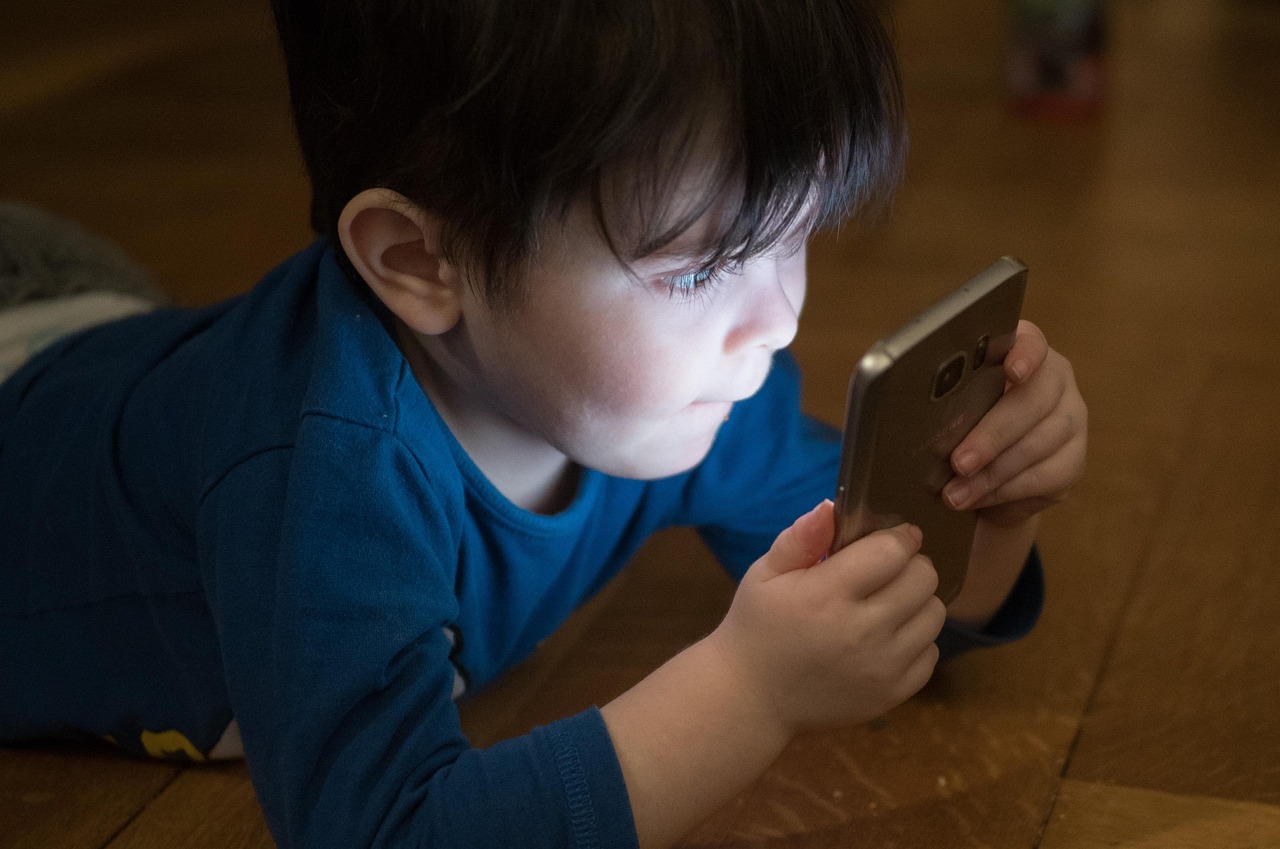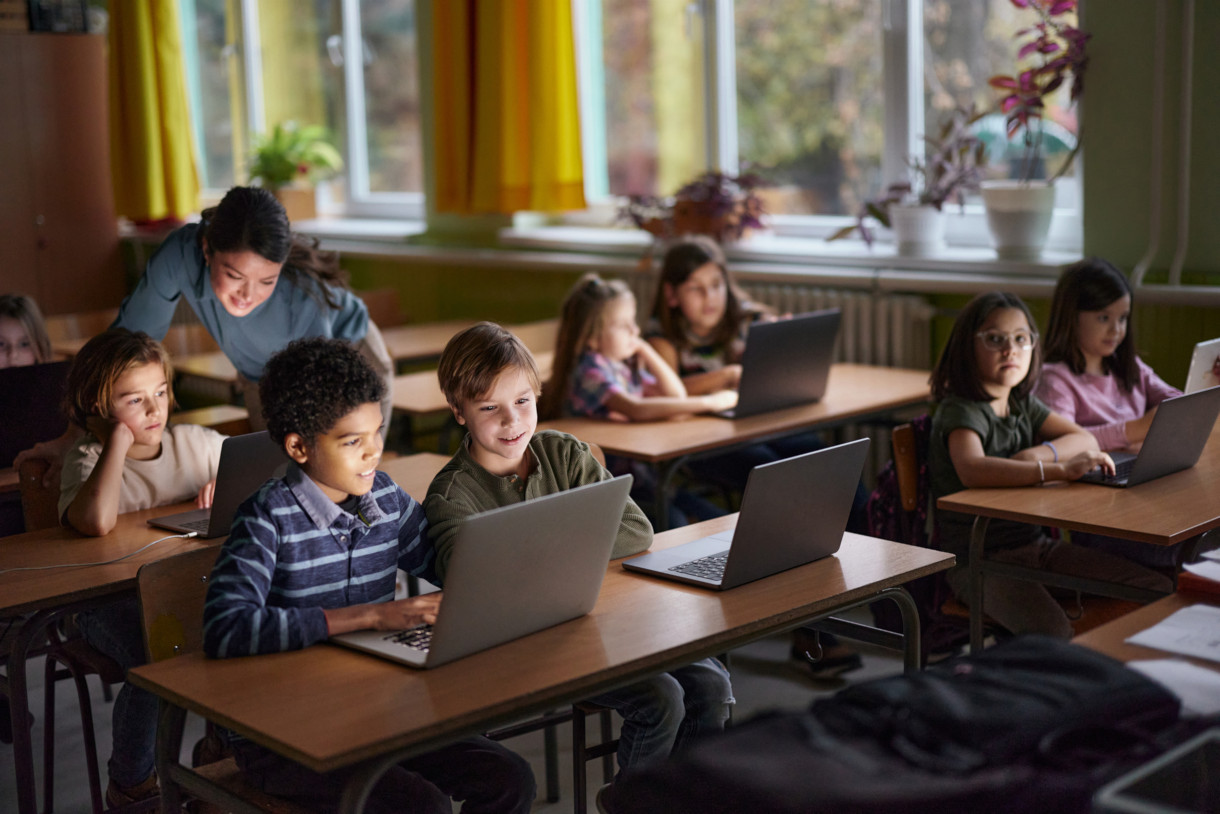Screen Time Mostly Harmless in Small Doses, Suggests New Study
A new study focused on screen time looked at tens of thousands of children and was designed to be the most robust to date on the topic.

The impact of screen time on children continues to be an important and closely watched topic for educators and parents. Many currently believe that excessive use of screens, from iPads to phones, laptops, and TVs, have facilitated mental health problems in children across the globe. But research has also demonstrated that it is precisely those children who are more at-risk who tend to turn toward screens as a coping mechanism. In other words, it’s the chicken or egg problem: Which came first, screen use or negative mental health?
A recent study looking at the social-emotional impact of screen time on children was designed to provide the most comprehensive answer to that question. In a review of 132 previous studies involving tens of thousands kids, researchers found that excessive screen use was linked to social-emotional problems and that social-emotional problems also led to more screen use. However, moderate amounts of screen time had minimal impacts.
Meanwhile, using screens for gaming was associated with significantly more negative mental health outcomes, says Michael Noetel, one of the study's authors and a professor at The University of Queensland in Australia.
How Was This Review Designed
For this analysis, Noetel and his fellow researchers only included longitudinal studies—studies that follow the same group of participants over extended periods of time. This contrasts with many studies that examine screen time, which are often cross-sectional studies that only look at data from people at one specific point in time.
“Cross-sectional studies are snapshots—they might show heavy screen users have more problems, but we can't tell what came first,” Noetel says. “Maybe anxious kids just like screens more? Our longitudinal studies followed the same kids for years. We could see that kids using screens at age 5 had more problems by age 7, even after accounting for their problems at age 5. That's much stronger evidence that screens actually cause problems, not just that troubled kids like screens.”
He adds, “When you track 300,000 kids over time and see the same patterns everywhere, that's about the best evidence we can get without randomly banning screens for thousands of children.”
What Are The Biggest Takeaways For Parents And Educators?
Screen time guidelines for children often recommend less than 1 hour of screen time per day for young kids, and under 2 hours a day for older children. If you stick to these guidelines, risks are minimal, Noetel says. He describes the risk around various amounts of screen time as follows:
Tools and ideas to transform education. Sign up below.
- "Under guidelines: Almost zero increased risk. Like having one biscuit versus two—no meaningful difference."
- "At the guideline limit: Still pretty safe. The problems are minimal."
- “Exceeding guidelines—3+ hours—the risk increases noticeably. Each extra hour likely means less sleep, less play, or less family time."
- “4+ hours daily: This is where we see real problems emerging. Kids in this range showed meaningfully higher anxiety, aggression, and attention problems.”
Noetel adds that you can think of screen time like a soft drink. “One glass won't hurt. Two is pushing it. By the third or fourth glass daily, you're looking at real health impacts that build over time,” he says.
Additionally, gaming changes this equation. “Even moderate gaming—1-2 hours—showed stronger links to problems than 3-4 hours of TV.”
What Is Most Surprising About This Research?
Noetel says he was not expecting to see such a negative impact from gaming.
“I'd just bought my kids a Nintendo Switch, hoping games would teach my kids problem-solving. But gaming stood out as particularly risky, much worse than other screen activities,” he says.
He's also surprised by the two-way connection between screens and emotional problems.
“We always hear screens damage kids. We rarely hear that damaged kids seek out screens. It's a vicious cycle that feeds itself,” he says.
What About Educational Screen Use?
“Unfortunately, we couldn't properly test educational content on its own. While six studies looked at educational screen use, they weren't reported in a way we could separate out for analysis,” Noetel says. “Most studies lumped all screen types together.
He adds, "What we can say is that when screens were used for 'general purposes,' (which includes some educational use), the effects were much weaker than gaming. The negative effect for general screen use was small.”
In addition, previous research suggests educational content—especially programs targeting literacy or numeracy—can actually have benefits. But the team couldn't isolate those effects in their meta-analysis.
A previous study by Noetel and his colleagues suggested “screens for education are fine, and probably very good.”
How Has This Research Impacted Noetel as a Parent?
“I've got three kids under seven, so this research hit home,” Noetel says. “We removed Netflix from the smart TVs and only kept our public broadcaster, which is a bit tamer and more educational. We dropped YouTube from their tablets and kept just educational games.”
He adds, “We only play the Switch together or watch Netflix movies as a family. When screens are shared, they're less likely to become a problem. It turns screen time into family time.”
Other Advice For Parents
“Parents get told to cut screen time but rarely get tools to handle the emotional problems driving it,” Noetel says. “Programs like Triple P can help families build those skills.”
Although the idea of cutting screen time can be daunting, understanding the impact is the first step.
“The most important thing: this isn't about perfection. No parent gets it right all the time," he adds. "But understanding that screens and emotions are connected—that excessive use might be a symptom, not just a cause—that changes how we help our kids. We don't need to ban screens. We need to help kids handle their emotions better, so they don't need screens as a crutch.”
Erik Ofgang is a Tech & Learning contributor. A journalist, author and educator, his work has appeared in The New York Times, the Washington Post, the Smithsonian, The Atlantic, and Associated Press. He currently teaches at Western Connecticut State University’s MFA program. While a staff writer at Connecticut Magazine he won a Society of Professional Journalism Award for his education reporting. He is interested in how humans learn and how technology can make that more effective.

